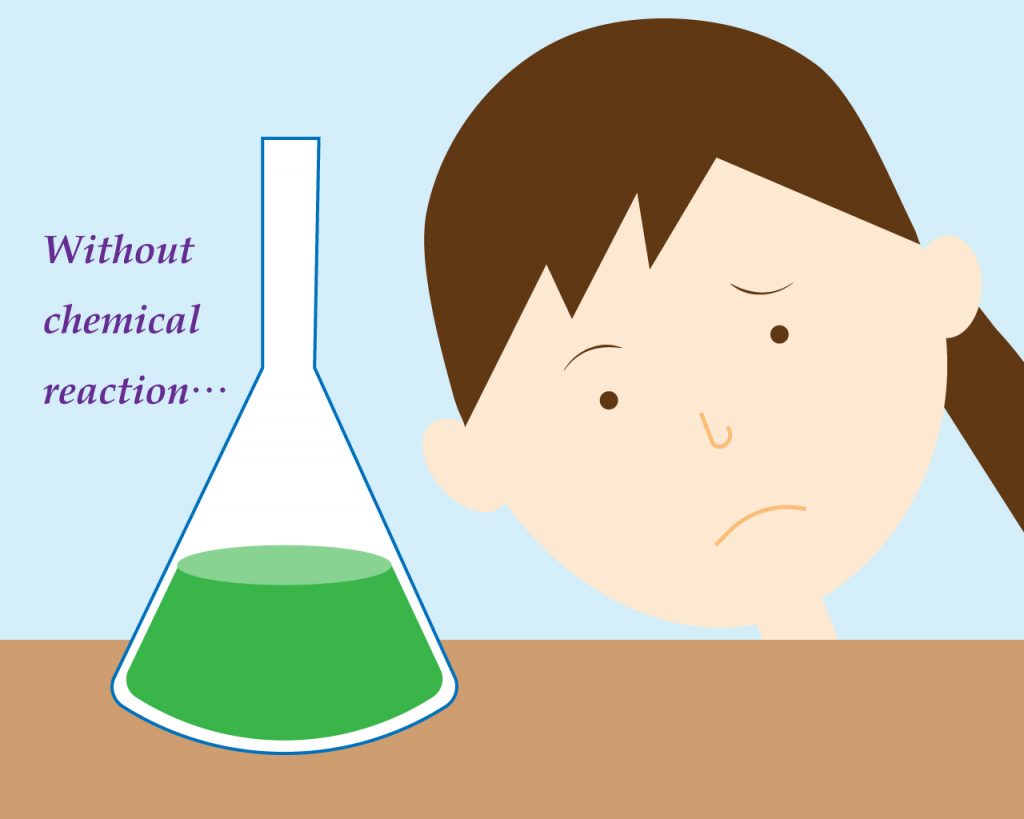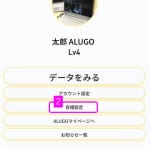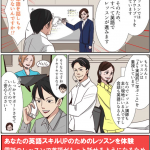技術営業職・エンジニア職・研究開発職必見!データ・図表説明に使える英語フレーズ集
高い技術力を誇る日本製品は世界でも通用する優れものですが、海外顧客を相手に売り込むときは、自社製品の特長を英語で説明する機会も少なくありません。他社にはない魅力ある機能や仕様を英語でうまく表現できず、もどかしい思いをしたことはありませんか?言葉の壁のせいで製品の良さを伝えられないと、非常にもったいないですよね?
そこで今回は、技術営業職やエンジニア職、研究開発職などの技術系ビジネスパーソンが使える便利な英語フレーズを紹介します。データや図表を扱う場面を想定し、プレゼンスキルをぐっと底上げできる語彙を厳選しました。自分が担当する製品を説明するのにぴったりな言い回しを見つけ、展示会や研究報告会、国際学会などで質問されても、自信を持って答えられるようになりましょう。(というわけで今回は少し専門的でレベルの高い単語も含まれています。)
データ値・図表説明に使える英語フレーズ
見せたいデータや図表が何を示しているのかを説明するとき、つい1つの単語だけに頼っていませんか?たとえ単語を正しく使っていたとしても、多用すると聞き手にはくどい印象を残してしまいます。さまざまな動詞や表現を使うように心がけると、内容にもメリハリが出て、説得力のあるプレゼンになります。
ポイント1. Show以外の動詞をマスター
事象や結果を「示す」とき、showを使ってしまいたくなりますが、「示す」を意味する動詞にはいろいろなものがあります。用途やニュアンスによって使い分けましょう。Illustrate:グラフや図など描かれたもの
Figure 1 illustrates the apparatus used for the experiment.
(図1は実験に使われた装置を示します。)
(図1は実験に使われた装置を示します。)
Demonstrate:実験手順などの動作が伴うもの
Figure 2 demonstrates the experimental procedure.
(図2は実験手順を示します。)
(図2は実験手順を示します。)
Reveal:明らかにする場合
Figure 3 reveals the 10% increase in CO2 absorption rate after catalyst coating.
(図3は触媒塗布後における二酸化炭素吸収率の10%増大を示しています。)
(図3は触媒塗布後における二酸化炭素吸収率の10%増大を示しています。)
Suggest:間接的に示唆するとき
Figure 4 suggested the use of UV lights could be effective for disinfection.
(図4はUVライトの使用が消毒に効果的であり得ることを示しました。)
(図4はUVライトの使用が消毒に効果的であり得ることを示しました。)
Imply:暗に意味するとき
Figure 5 implies the use of UV lights could be effective for disinfection.
(図5はUVライトの使用が消毒に効果的であり得ることを示しています。)
(図5はUVライトの使用が消毒に効果的であり得ることを示しています。)
Prove:証明できるとき
Figure 6 proves the temperature dependence of viscosity.
(図6は粘度の温度依存性を示します。)
(図6は粘度の温度依存性を示します。)
Indicate:直接的に指し示すとき
Figure 7 indicates the rate of change with time.
(図7は時間変化率を示します。)
(図7は時間変化率を示します。)
Display:傾向や振る舞いを見せるとき
Experimental results in Figure 8 displayed sharp spike after protein injection.
(図8の実験結果はタンパク質投入後に急上昇を示しました。)
(図8の実験結果はタンパク質投入後に急上昇を示しました。)
Exhibit:変化や兆候が表面化するとき
Measured results from Figure 9 exhibit the change in material characteristic after the procedure.
(図9の測定結果は処置後の材料特性の変化を示しています。)
(図9の測定結果は処置後の材料特性の変化を示しています。)
ポイント2. 主語を変える、受動態を活用する
プレゼンをする際、メインとなるデータや図表が主語になるのが一般的です。しかし、主語を変化させたり、受動態表現を活用したりすることで、さまざまな言い回しが生まれます。例えば、同じshowを使う場合でも、受動態を用いると違った印象になります。
The flux remained almost constant as shown in Figure 9.
(図9に示されたように、流量はほぼ一定に保たれました。)
(図9に示されたように、流量はほぼ一定に保たれました。)
また、助動詞を使った受動態表現も可能です。
As can be seen in Figure 9, the flux remained almost constant.
(図9に見られるように、流量はほぼ一定に保たれました。)
(図9に見られるように、流量はほぼ一定に保たれました。)
形式主語のItを用いることで、表現のバリエーションを増やすことができます。
It can be found that the flux remained almost constant in Figure 9.
(流量はほぼ一定に保たれたことが、図9にみられます。)
(流量はほぼ一定に保たれたことが、図9にみられます。)
結果やデータ値を主語にして受動態にすることもできます。
Experimental results were obtained as Figure 10.1.
(図10.1のような実験結果が得られました。)
(図10.1のような実験結果が得られました。)
Calculated values are given in Figure 10.2.
(図10.2には計算値が与えられています。)
(図10.2には計算値が与えられています。)
Predicted numbers are provided in Figure 11.1.
(図11.1に予測値が与えられています。)
(図11.1に予測値が与えられています。)
Estimated amounts were plotted on a graph in Figure 12.
(図12のグラフ上に推定量が示されました。)
(図12のグラフ上に推定量が示されました。)
Plots were made proportional to baseline as Figure 13.
(図13にあるように、基準線に比例してデータ値が入れ込まれました。)
(図13にあるように、基準線に比例してデータ値が入れ込まれました。)
日本語でもよく使う「我々は…」は一人称の主語で、英語でもWeやOur groupを主語に持ってくると、主体性が強調された印象を与え、使える動詞の種類も多くなります。また、Our teamやOur groupが前述の文中で指定されていれば、文脈によってはthe teamやthe group memberを主語に用いることができます。
 Make:図表を作成したとき
Make:図表を作成したとき
We made the list of experimental data on Table 1.
(実験データの一覧を表1に作りました。)
(実験データの一覧を表1に作りました。)
Obtain:データや結果を取得したとき
Our team obtained the experimental data as Table 1.
(表1のように実験データを取得しました。)
(表1のように実験データを取得しました。)
Draw:グラフ上に直線・曲線を引いたとき
We drew a line with data points along the baseline on Figure 13.
(データ値を用いて、基準線に沿った直線を図13上に引きました。)
(データ値を用いて、基準線に沿った直線を図13上に引きました。)
Study:詳しく調べ、検討するとき
Our team studied the relation of catalyst coating to CO2 absorption rate in Figure 3.
(図3において、触媒塗布と二酸化炭素吸収率の関係を調べました。)
(図3において、触媒塗布と二酸化炭素吸収率の関係を調べました。)
Examine:観察や分析、試験を伴いながら調べるとき
Our group examined the effect of catalyst coating on CO2 absorption rate in Figure 3.
(図3において、触媒塗布の二酸化炭素吸収率に対する効果を調べました。)
(図3において、触媒塗布の二酸化炭素吸収率に対する効果を調べました。)
Evaluate:評価するとき
In Figure 11.2, the team evaluated the accuracy of predicted values of Figure 11.1.
(図11.2では図11.1中の予測値の精度を評価しました。)
(図11.2では図11.1中の予測値の精度を評価しました。)
Investigate:詳細に調査し、研究するとき
The group investigated the affinity of interaction between activated carbon and odor molecules in Figure 14.
(図14では活性炭とニオイ分子の親和性を調べました。)
(図14では活性炭とニオイ分子の親和性を調べました。)
Compare:比較するとき
In Figure 10.3, we compared the experimental values of Figure 10.1 and the calculated values of Figure 10.2.
(図10.3において、図10.1の実験値と図10.2の計算値を比較しました。)
(図10.3において、図10.1の実験値と図10.2の計算値を比較しました。)
Observe:観察、観測するとき
Our group observed the color change trend in different base materials as Figure 15.1.
(図15.1のように、異なる基材の変色傾向を観察しました。)
(図15.1のように、異なる基材の変色傾向を観察しました。)
Analyze:分析、解析するとき
We analyzed surface composition of each base materials in Figure 15.2.
(図15.2では各基材の表面組成を分析しました。)
(図15.2では各基材の表面組成を分析しました。)
データの読み取り・比較に使える英語フレーズ
データや実験結果の性質をより深く理解するために、それぞれの値を比較しながら読み取ることが必要になりますが、考察するときによく使われるフレーズを覚えると、表現の幅が広がります。ポイント1. 用いる対義語の種類を増やす
データ値を比較し、変化の度合いを示すときに対義語のストックが豊富にあると便利です。相手に伝えたいことをイメージし、状況によって適切な表現を使い分けましょう。Increase/Decrease:増減を伴う変化があるとき
Figure 3 reveals the 10% increase in CO2 absorption rate after catalyst coating.
(図3は触媒塗布後における二酸化炭素吸収率の10%増大を示しています。)
(図3は触媒塗布後における二酸化炭素吸収率の10%増大を示しています。)
It resulted in a 15% decrease in CO2 absorption rate without catalyst coating.
(触媒塗布がない場合、15%の二酸化炭素吸収率の減少をもたらしました。)
(触媒塗布がない場合、15%の二酸化炭素吸収率の減少をもたらしました。)
 High(er)/Low(er):(比較して)高い/低いとき
High(er)/Low(er):(比較して)高い/低いとき
We obtained higher CO2 absorption rate after catalyst coating.
(触媒塗布後は高い二酸化炭素吸収率を得られました。)
(触媒塗布後は高い二酸化炭素吸収率を得られました。)
Results remained low without catalyst coating.
(触媒塗布がない場合、結果は低いままでした。)
(触媒塗布がない場合、結果は低いままでした。)
Above/Below:一定値を超える/超えないとき
Affinity level was above average in case for nanoparticles of activated carbon in Figure 14.
(図14における活性炭のナノ粒子では、親和性の度合いが平均値以上でした。)
(図14における活性炭のナノ粒子では、親和性の度合いが平均値以上でした。)
Affinity level was below average when we used normal carbon.
(通常の炭素では、親和性の度合いは平均値以下でした。)
(通常の炭素では、親和性の度合いは平均値以下でした。)
Better/Worse:(比較して)良し悪しがあるとき
The use of UV lights for disinfection contributed for better outcome in Figure 4.
(図4では、消毒するためにUVライトを使用したことにより、良い結果が得られました。)
(図4では、消毒するためにUVライトを使用したことにより、良い結果が得られました。)
Using the humidifier however, caused worse results.
(また一方で、加湿器を使用したことは、ひどい結果を招きました。)
(また一方で、加湿器を使用したことは、ひどい結果を招きました。)
Spike/Drop:急上昇/急降下がみられるとき
Experimental results in Figure 7 displayed sharp spike after protein injection.
(図7の実験結果はタンパク質投入後に急上昇を示しました。)
(図7の実験結果はタンパク質投入後に急上昇を示しました。)
On the other hand, the amount dropped with glucose injection.
(一方、グルコース投入によって量は低下しました。)
(一方、グルコース投入によって量は低下しました。)
Improve:性能や価値が改善、向上、高められるとき
CO2 absorption rate improved with catalyst coating as shown in Figure 3.
(図3に示されたように、触媒塗布で二酸化炭素吸収率が向上しました。)
(図3に示されたように、触媒塗布で二酸化炭素吸収率が向上しました。)
Enhance:質や度合いが強化、増進されるとき
Attention is drawn to the fact where the water repellent effect was enhanced after the procedure in Figure 8.
(図8において、処置後は撥水効果が高まった事実に目が向けられます。)
(図8において、処置後は撥水効果が高まった事実に目が向けられます。)
Refine:洗練、精錬、改良されるとき
The surface asperity levels were refined after heat treatment as Figure 8.
(図8にあるように、熱処理後は表面の粗さが解消されました。)
(図8にあるように、熱処理後は表面の粗さが解消されました。)
Recover:回復、取り戻されたとき
Experimental results in Figure 7 recovered rapidly after protein injection.
(図7の実験結果において、タンパク質投入後は劇的に回復しました。)
(図7の実験結果において、タンパク質投入後は劇的に回復しました。)
Deteriorate:品質や価値が劣化、低下するとき
As we can see in Figure 15.2, surface’s antirust effect deteriorated after the color change.
(図15.2に見られるように、変色後は表面の防錆効果が低下しました。)
(図15.2に見られるように、変色後は表面の防錆効果が低下しました。)
Reduce:量や程度が減少、縮小するとき
CO2 absorption rate reduced in all cases without catalyst coating.
(触媒塗布のないものは、すべての事例において二酸化炭素吸収率が減少しました。)
(触媒塗布のないものは、すべての事例において二酸化炭素吸収率が減少しました。)
Diminish:能力などが落ちる、減衰するとき
It is clear from Figure 8 that the water repellent effect diminished after certain days without the procedure.
(図8から、処置のないものは一定の日数が経過すると、撥水効果が落ちることが明らかです。)
(図8から、処置のないものは一定の日数が経過すると、撥水効果が落ちることが明らかです。)
Decline:数量や力が減少、低下するとき
From Figure 4, it is safe to say the effect of disinfection declines with low-power UV lights.
(図4より、低出力のUVライトを使用すると消毒効果が低下するといえます。)
(図4より、低出力のUVライトを使用すると消毒効果が低下するといえます。)
Descend:数量が少なくなる、傾斜する、降下するとき
The amount descended rapidly with glucose injection as shown Figure 7.
(図7に示されるように、グルコース投入によって量が大幅に少なくなりました。)
(図7に示されるように、グルコース投入によって量が大幅に少なくなりました。)
ポイント2. 範囲には動詞+前置詞のセット使い
データの出現状態や範囲、分類されるものがある場合は、前置詞までのセット毎に覚えてしまうと自然とすらすら使えるようになります。Fall out:範囲から外れるとき
As we can see in Figure 7, the results fell out of normal range after glucose injection.
(図7に見られるように、グルコース投入後の結果は正常域から外れました。)
(図7に見られるように、グルコース投入後の結果は正常域から外れました。)
 Fit within:範囲内に収まるとき
Fit within:範囲内に収まるとき
In Figure 11.2, the actual values fit within the predicted figures.
(図11.2において、実測値は予測値内に収まりました。)
(図11.2において、実測値は予測値内に収まりました。)
Fall into:他の定義に該当するとき、分類されるとき
The rate of change with time indicated in Figure 6 falls into acceleration.
(図6に示された時間変化率は加速度に該当します。)
(図6に示された時間変化率は加速度に該当します。)
ポイント3. 基準の種類とイメージの違いを見極める
一口に基準といっても、その基準が要件か基準値なのか、上限・下限や先行商品なのかによって、満たす、達する、超える、追い越すなど微妙なイメージの違いで、用いる言い回しが変わってきます。Meet:要件を満たすとき
As shown in Figure 4, the use of high-power UV lights can meet the requirement for disinfection.
(図4に示される通り、高出力UVライトの使用によって消毒基準を満たすことが可能です。)
(図4に示される通り、高出力UVライトの使用によって消毒基準を満たすことが可能です。)
Reach/Hit:基準値に達するとき
In Figure 5, the viscosity remained constant after reaching melting point.
(図5において、融点に達した後は粘度が一定に保たれました。)
(図5において、融点に達した後は粘度が一定に保たれました。)
Viscosity remained constant after hitting 323 K in Figure 5.
(図5において、323 Kに達した後は粘度が一定に保たれました。)
(図5において、323 Kに達した後は粘度が一定に保たれました。)
Exceed:限度を超えるとき
As can be seen in Figure 7, experimental results exceeded the threshold after significant amount of protein input.
(図7に見られる通り、相当量のタンパク質が投入されると、実験結果は閾値を超えました。)
(図7に見られる通り、相当量のタンパク質が投入されると、実験結果は閾値を超えました。)
Overtake:先行するものを追い越すとき
With catalyst coating, Figure 3 shows the result of CO2 absorption rate overtook the one of previous product.
(触媒塗布により、二酸化炭素吸収率が旧製品のそれを超えたことを、図3で示しています。)
(触媒塗布により、二酸化炭素吸収率が旧製品のそれを超えたことを、図3で示しています。)
ポイント4. Change以外の動詞を用いる
実験によってデータに変化が発生したとき、ついChangeを使いたくなりますが、ここでも幅広い表現方法を知っておくと便利です。Differ:異なる、一致しないとき
The analysis from Figure 15.2 revealed that the surface composition of each base materials differed from the original.
(図15.2の分析結果は、各基材の表面組成がもとの基材の組成とは異なることを明らかにしました。)
(図15.2の分析結果は、各基材の表面組成がもとの基材の組成とは異なることを明らかにしました。)
Shift:位置や方向が変わる、移るとき
As shown in Figure 9, the flux shifted to constant level after certain amount of time.
(図9で示されている通り、一定の時間が経つと、流量は一定値になりました。)
(図9で示されている通り、一定の時間が経つと、流量は一定値になりました。)
Transition:形や状態が変わるとき
The mixture transitioned to a stable state above melting point in Figure 5.
(図5において、融点以降は混合物が安定状態になりました。)
(図5において、融点以降は混合物が安定状態になりました。)
Grow:量が増え、成長するとき
From Figure 4, the bacteria grew its number under low-power UV lights.
(図4より、低出力UVライト下では細菌量が増えました。)
(図4より、低出力UVライト下では細菌量が増えました。)
Turn into:性質や外観が変わるとき
The analysis from Figure 15.2 showed that the surface composition of each base materials turned into a different substance.
(図15.2の分析結果は、各基材の表面組成がもとの基材とは異なる物質になったことを示しました。)
(図15.2の分析結果は、各基材の表面組成がもとの基材とは異なる物質になったことを示しました。)
ポイント5. 変化がなくても一連のフレーズで対応
はっきりとした変化がないときや、全く変化がないときにも、頻繁に使うフレーズで覚えてしまえば、通り一遍の言い回しが避けられます。ある状態が継続して保たれるとき:
Results remained low without catalyst coating in Figure 3.
(図3において、触媒塗布がない場合、結果は低いままでした。)
(図3において、触媒塗布がない場合、結果は低いままでした。)
The flux stayed almost constant as shown in Figure 9.
(図9に示されたように、流量はほぼ一定に保たれました。)
(図9に示されたように、流量はほぼ一定に保たれました。)
Viscosity kept being proportional after hitting 323 K in Figure 5.
(図5では323 Kに達した後、粘度は比例し続けました。)
(図5では323 Kに達した後、粘度は比例し続けました。)
Results continued to be consistently low without catalyst coating in Figure 3.
(図3において、触媒塗布がない場合、結果は一貫して低いままでした。)
(図3において、触媒塗布がない場合、結果は一貫して低いままでした。)
特別な変化が見られないとき:
We didn’t see any irregularity when we compared the experimental and calculated values in Figure 10.3.
(実験値と計算値を図10.3で比較した際、不規則性は見られませんでした。)
(実験値と計算値を図10.3で比較した際、不規則性は見られませんでした。)
When we take a look at the NO2 absorption rate with catalyst coating in Figure 3, the difference is not that obvious compared to the one for CO2.
(図3の触媒塗布した二酸化窒素吸収率をみると、二酸化炭素のそれと比較して、違いはそれほど明らかではありません。)
(図3の触媒塗布した二酸化窒素吸収率をみると、二酸化炭素のそれと比較して、違いはそれほど明らかではありません。)
There wasn’t any significant change of results with insulin injection as shown in Figure 7.
(図7に示された通り、インスリン投入による著しい変化は見られませんでした。)
(図7に示された通り、インスリン投入による著しい変化は見られませんでした。)
全体的な印象を述べるに留めるとき:
The experimental data on Table 1 balanced out pretty well.
(表1の実験データはうまく釣り合いが取れています。)
(表1の実験データはうまく釣り合いが取れています。)
In Figure 13, the measurement results became proportional to baseline as expected.
(図13では、予想通り実測値は基準線に比例しました。)
(図13では、予想通り実測値は基準線に比例しました。)
We obtained some hopeful experimental results as Figure 10.1.
(図10.1のように、見込みのある実験結果が得られました。)
(図10.1のように、見込みのある実験結果が得られました。)
The outcome was rather disappointing in Figure 4.
(図4の結果は予想以上に残念なものでした。)
(図4の結果は予想以上に残念なものでした。)

データや図表の結果から結論へ結びつけるときに使える英語フレーズ
考察したデータや図表結果から結論へと結びつける際にも、適切なフレーズを使って説明できると、それだけで説得力があがります。新規の手法や手順、新たな関係性を見つけ、最終的に結論を述べるとき、「どの事象」または「どのようなもの」を「どうした」と明言しなければなりません。
ポイント1. 動詞のバリエーションを増やす
英語で話すときは「どうした」の部分を先に明確にするので、まずは動詞から考えましょう。ここでは、新しいことを見つけたり、結論づけたりするときに使える動詞の例を挙げます。Determine:判定、見極めるとき
From Figure 15.3, our team determined the direct cause of the color change in each base materials.
(図15.3より、各基材における変色の直接的な原因を究明しました。)
(図15.3より、各基材における変色の直接的な原因を究明しました。)
Develop:質が高まり、成長するとき
As it can be seen from Figure 3, we developed a suitable method to improve CO2 absorption rate by catalyst coating.
(図3から見て取れるように、触媒塗布による二酸化炭素吸収率を改善する適切な手法を開発しました。)
(図3から見て取れるように、触媒塗布による二酸化炭素吸収率を改善する適切な手法を開発しました。)
Find out:発見する、見つけるとき
Our group found out that the flux remained almost constant in Figure 9.
(図9において、流量がほぼ一定に保たれたことを見つけました。)
(図9において、流量がほぼ一定に保たれたことを見つけました。)
Confirm:裏付けがとれる、確認するとき
We confirmed the catalyst coating is the practical technique to improve CO2 absorption as Figure 3.
(図3のように、触媒塗布が二酸化炭素吸収率を改善する実用的な手法だと確認しました。)
(図3のように、触媒塗布が二酸化炭素吸収率を改善する実用的な手法だと確認しました。)
Learn:知る、わかるとき
From Figure 14, our team learned activated carbon contributes to maintain high affinity level with odor particles.
(図14より、ニオイ分子との高い親和性を維持するのに、活性炭が寄与することがわかりました。)
(図14より、ニオイ分子との高い親和性を維持するのに、活性炭が寄与することがわかりました。)
Discover:発見、見出すとき
Our group discovered the relationship of humidity to the rate of color change in base materials from Figure 15.1.
(図15.1より、基材変色に対する湿度の関係を発見しました。)
(図15.1より、基材変色に対する湿度の関係を発見しました。)
Interpret:解釈、解明するとき
From Figure 4, we can interpret the use of UV lights is effective for disinfection.
(図4よりUVライトの使用が消毒に効果的であると捉えられます。)
(図4よりUVライトの使用が消毒に効果的であると捉えられます。)
Conclude:結論を出すとき
Because most of the measurement results disagreed with the calculated values in Figure 10.3, it can be concluded that this model is not reliable.
(図10.3において、ほとんどの実測値が計算値と一致しなかったため、本モデルは信頼性がないと結論付けられました。)
(図10.3において、ほとんどの実測値が計算値と一致しなかったため、本モデルは信頼性がないと結論付けられました。)
Agree/Disagree:一致する・一致しないとき
Since the experimental results agreed with the calculated values in Figure 10.3, the calculation method can be considered as a valid model.
(図10.3において、実験値が計算値と一致したので、この計算手法が有効なモデルであると考えられます。)
(図10.3において、実験値が計算値と一致したので、この計算手法が有効なモデルであると考えられます。)
Because most of the measurement results disagreed with the calculated values in Figure 10.3, it can be concluded that this model is not reliable.
(図10.3において、ほとんどの実測値が計算値と一致しなかったため、本モデルは信頼性がないと結論付けられました。)
(図10.3において、ほとんどの実測値が計算値と一致しなかったため、本モデルは信頼性がないと結論付けられました。)
言い回しのなかには、フレーズ毎に覚えてしまった方がいいものもあります。
Safe to say:~といって間違いない
It is safe to say the effect of disinfection declines with low-power UV lights.
(低出力のUVライトを使用すると消毒効果が低下するといって間違いありません。)
(低出力のUVライトを使用すると消毒効果が低下するといって間違いありません。)
Be considered:~であると考えられる
Since the experimental results agreed with the calculated values in Figure 10.3, the calculation method can be considered as a valid model.
(図10.3において、実験値が計算値と一致したので、この計算手法が有効なモデルであると考えられます。)
(図10.3において、実験値が計算値と一致したので、この計算手法が有効なモデルであると考えられます。)
Be regarded:~とみなす
From Figure 4, it can be regarded that the use of UV lights is effective for disinfection.
(図4よりUVライトの使用が消毒に効果的であるとみなされます。)
(図4よりUVライトの使用が消毒に効果的であるとみなされます。)
ポイント2. 形容詞のバリエーションを増やす
新規の手法や手順を見出した際、毎回New methodと言うだけでは物足りないですよね?また、結果を検証したとき、それらをどのような解釈で捉えるのかを説明する場面があるかも知れません。そこで、「どのようなもの」なのかを説明するときの形容詞に着目しましょう。Valid:有効な
Since the experimental results agreed with the calculated values in Figure 10.3, the calculation method can be considered as a valid model.
(図10.3において、実験値が計算値と一致したので、この計算手法が有効なモデルであると考えられます。)
(図10.3において、実験値が計算値と一致したので、この計算手法が有効なモデルであると考えられます。)
Effective:効果的な
From Figure 4, we can interpret the use of UV lights is effective for disinfection.
(図4よりUVライトの使用が消毒に効果的であると捉えられます。)
(図4よりUVライトの使用が消毒に効果的であると捉えられます。)
Reliable:信頼性のある
Because most of the measurement results disagreed with the calculated values in Figure 10.3, it can be concluded that this model is not reliable.
(図10.3において、ほとんどの実測値が計算値と一致しなかったため、本モデルは信頼性がないと結論付けられました。)
(図10.3において、ほとんどの実測値が計算値と一致しなかったため、本モデルは信頼性がないと結論付けられました。)
Reasonable:妥当な、合理的な
As a consequence, the predicted numbers showed reasonable correspondence with the actual values in Figure 11.2.
(結果として、図11.2において、予測値は実測値との妥当な一致を示しました。)
(結果として、図11.2において、予測値は実測値との妥当な一致を示しました。)
Relevant:妥当な、適切な
We can summarize that protein injection is a relevant method to recover normal blood rate.
(要約すると、タンパク質の投入は、正常な血流速度を取り戻すのに妥当な手法であるといえます。)
(要約すると、タンパク質の投入は、正常な血流速度を取り戻すのに妥当な手法であるといえます。)
Suitable:適当な
As it can be seen from Figure 3, we developed a suitable technique to improve CO2 absorption rate by catalyst coating.
(図3から見て取れるように、触媒塗布による二酸化炭素吸収率を改善するのに適当な手法を開発しました。)
(図3から見て取れるように、触媒塗布による二酸化炭素吸収率を改善するのに適当な手法を開発しました。)
Practical:実用的な
We confirmed the catalyst coating is the practical technique to improve CO2 absorption as Figure 3.
(図3のように、触媒塗布が二酸化炭素吸収率を改善する実用的な手法だと確認しました。)
(図3のように、触媒塗布が二酸化炭素吸収率を改善する実用的な手法だと確認しました。)
Clear:明らかな
It is clear from Figure 8 that the heat treatment influenced the change in water repellent levels.
(図8から、熱処理が撥水度の変化に影響をもたらしたことは明らかです。)
(図8から、熱処理が撥水度の変化に影響をもたらしたことは明らかです。)
Useful:有益な
We can say UV lights are useful to disinfect.
(UVライトが消毒に有益であるといえます。)
(UVライトが消毒に有益であるといえます。)
Sufficient:十分な
In conclusion, it was able to maintain sufficient level of flux as Figure 9.
(結論として、図9の通り、十分な流量を保つことができました。)
(結論として、図9の通り、十分な流量を保つことができました。)

ポイント3. 動詞 ⇔ 名詞の言い換えをマスター
関係性や傾向、独特な振る舞いが見られたら、それが何を意味するのかも結言で述べることとなります。これらが「どの事象」にあたるのかの説明では、動詞だけでなく名詞形を上手に使い分けましょう。Relationship of/Relate to:関係・関係する
Our group discovered the relationship of humidity to the rate of color change in base materials from Figure 15.1.
(図15.1より、基材変色に対する湿度の関係を発見しました。)
(図15.1より、基材変色に対する湿度の関係を発見しました。)
Our group discovered the rate of color change in base materials is related to humidity from Figure 15.1.
(図15.1より、基材変色に湿度が関係することを発見しました。)
(図15.1より、基材変色に湿度が関係することを発見しました。)
Contribution of/Contribute:寄与・寄与する
With the contribution of activated carbon, it was possible maintain high affinity level with odor particles as Figure 14.
(図14にみられる通り、活性炭の寄与により、ニオイ分子との高い親和性を維持することが可能でした。)
(図14にみられる通り、活性炭の寄与により、ニオイ分子との高い親和性を維持することが可能でした。)
From Figure 14, our team learned activated carbon contributes to maintain high affinity level with odor particles.
(図14より、ニオイ分子との高い親和性を維持するのに、活性炭が寄与することがわかりました。)
(図14より、ニオイ分子との高い親和性を維持するのに、活性炭が寄与することがわかりました。)
Influence of/Influence:影響・影響を与える
It is clear from Figure 8 that the change in water repellent levels is the influence of heat treatment.
(図8から、撥水度の変化は熱処理の影響であることは明らかです。)
(図8から、撥水度の変化は熱処理の影響であることは明らかです。)
It is clear from Figure 8 that heat treatment influenced the water repellent levels.
(図8から、熱処理が撥水度に影響を与えたことは明らかです。)
(図8から、熱処理が撥水度に影響を与えたことは明らかです。)
Effect of/Effect:影響・もたらす
It can be concluded that the improved CO2 absorption rate is the effect of catalyst coating.
(二酸化炭素吸収率の改善は、触媒塗布の影響によるものだと結論付けられます。)
(二酸化炭素吸収率の改善は、触媒塗布の影響によるものだと結論付けられます。)
動詞はinfluenceを用いることが多いため、最近ではEffectを動詞として用いることは少なくなりましたが、一部の論文などで見かけることもありますので、例文は参考程度にどうぞ。
It can be concluded that catalyst coating effected to improve CO2 absorption rate.
(触媒塗布は、二酸化炭素吸収率の改善をもたらすと結論付けられます。)
(触媒塗布は、二酸化炭素吸収率の改善をもたらすと結論付けられます。)
Affect:影響を及ぼす
Glucose injection affected blood rate as Figure 7.
(図7の通り、グルコース投入は血流速度に影響を及ぼしました。)
(図7の通り、グルコース投入は血流速度に影響を及ぼしました。)
Dependent on/Depend/Dependence:依存している・依存する・依存性
As found in Figure 5, the viscosity is dependent on temperature.
(図5からわかったように、粘度は温度に依存しています。)
(図5からわかったように、粘度は温度に依存しています。)
From Figure 5, it is found that viscosity depends on temperature.
(図5より、粘度は温度によって決まることがわかりました。)
(図5より、粘度は温度によって決まることがわかりました。)
Figure 5 proves the temperature dependence of viscosity.
(図5は粘度の温度依存性を示します。)
(図5は粘度の温度依存性を示します。)
Independent of:依存しない
As indicated in Figure 6, the rate of change with time is independent of product type.
(図6で示されたように、時間変化率は製品タイプに依存しません。)
(図6で示されたように、時間変化率は製品タイプに依存しません。)
非依存特性を示す場合は、名詞のIndependencyを用いることもありますが、専門分野に限られるため、ここでは言及しませんでした。
Interaction of/Interact:相互作用、相互に作用する
The interaction of activated carbon with odor particles is determined in Figure 14.
(活性炭とニオイ分子の相互作用が図14にて見つけ出されました。)
(活性炭とニオイ分子の相互作用が図14にて見つけ出されました。)
Our team learned from Figure 14 that activated carbon interacts with odor particles due to their high affinity level.
(活性炭とニオイ分子の親和性が高いため、相互作用を起こすことが図14よりわかりました。)
(活性炭とニオイ分子の親和性が高いため、相互作用を起こすことが図14よりわかりました。)
<データ・図表説明に使える英語フレーズ集>まとめ
いかがでしたでしょうか。今回は技術系のビジネスシーンで、データや図表説明を行うときに使い勝手の良さそうな英語フレーズをまとめてみました。技術営業職やエンジニア職、開発職向けの英語フレーズという事で、非常に専門的な内容ではあります。しかし、技術職の方に英語でプレゼンをする機会があることも事実です。是非、参考にしていただければ幸いです。関連記事
また、英会話習得の効果を高めるためのTipsにご興味がありましたら、下記より資料をダウンロードいただけます。
【資料のご案内】 英会話習得の効率を更に高める3つの手法とは
※こちらは、資料の一部を抜粋したものです。



【英会話習得効率を高める3つの原則と活用例】の資料ダウンロードはこちらから。
項目を以下に入力して続きをご覧ください。





















